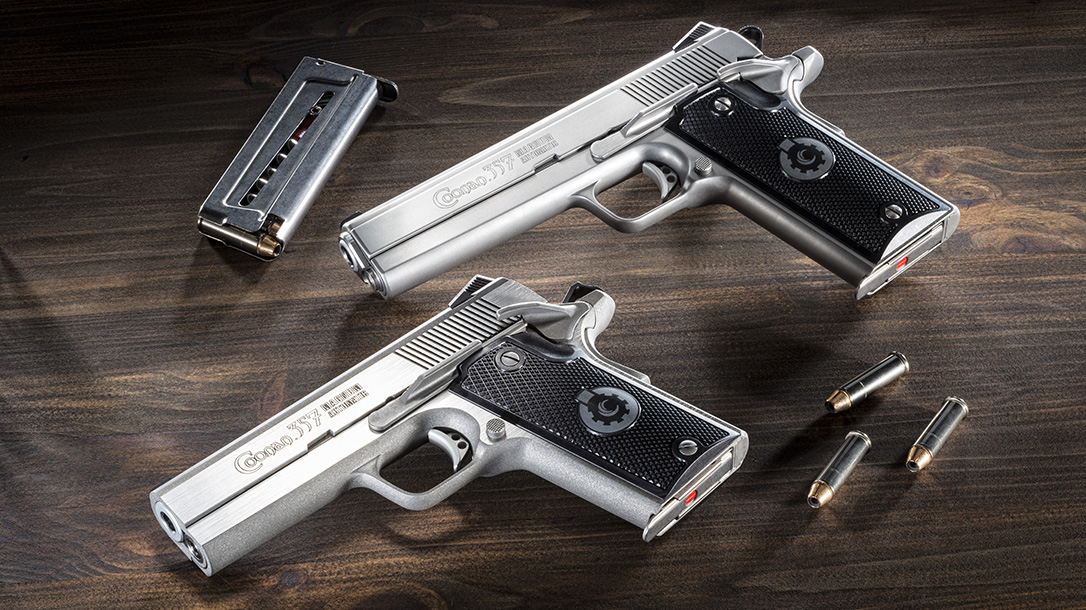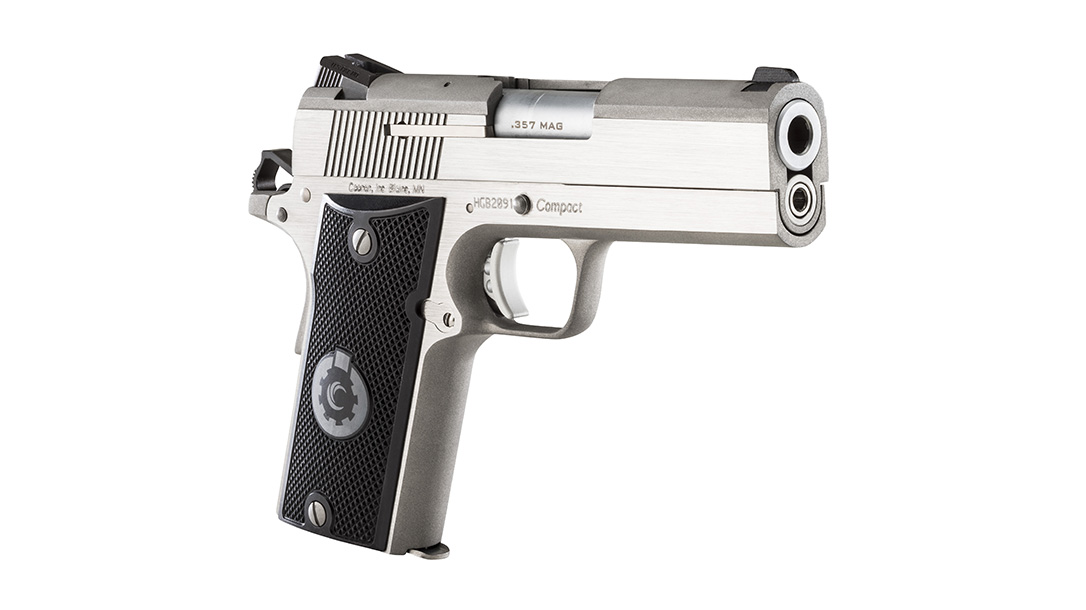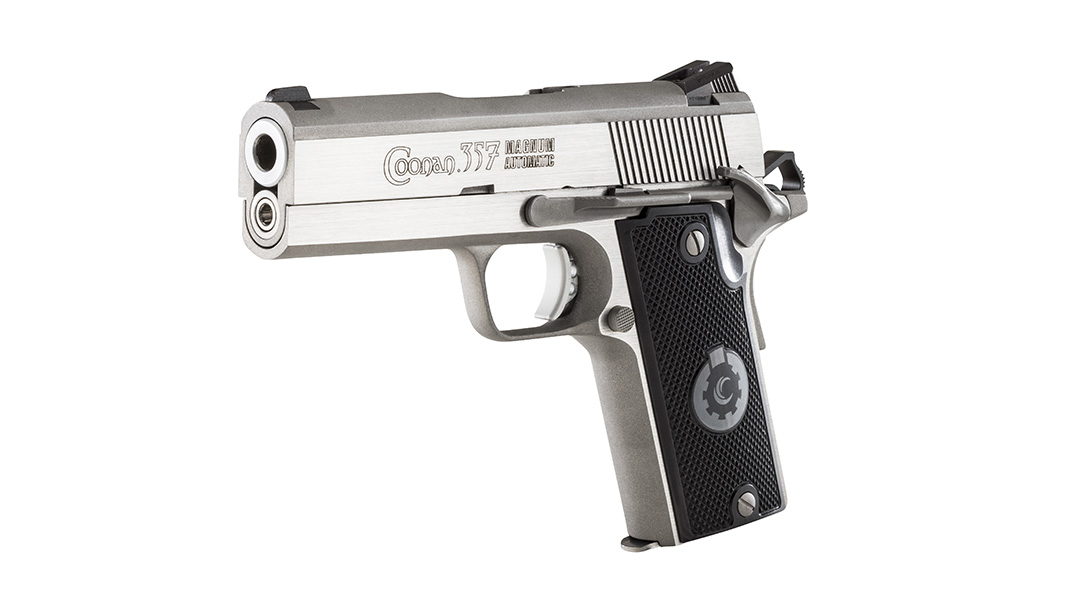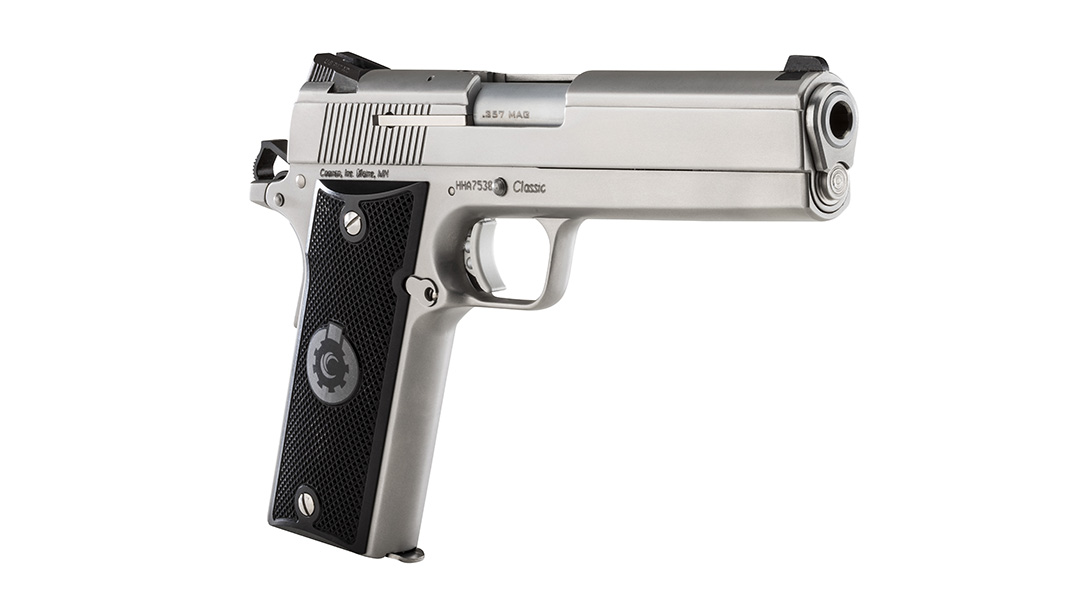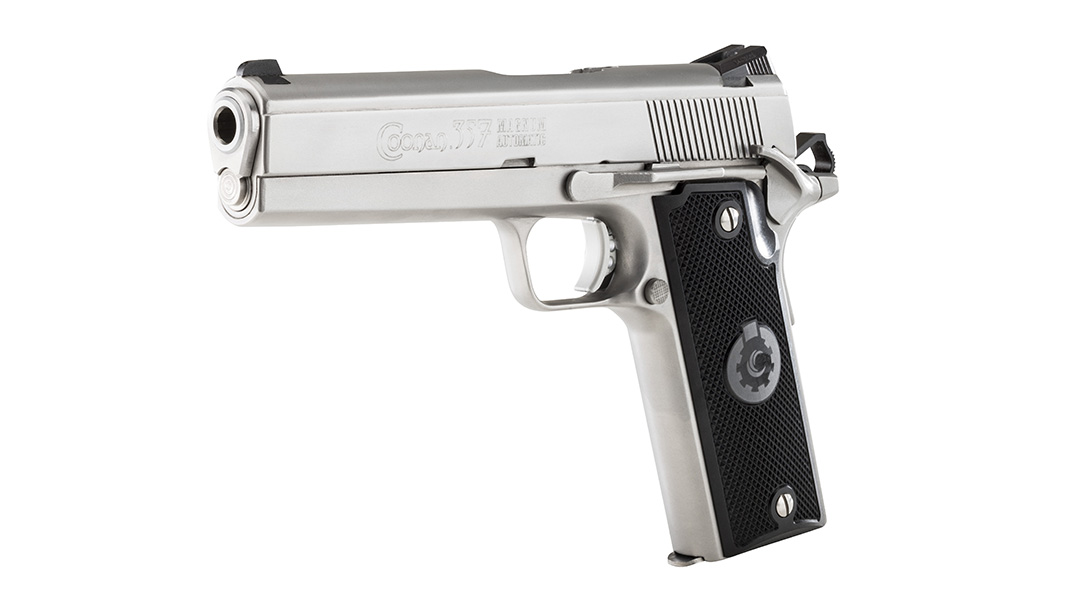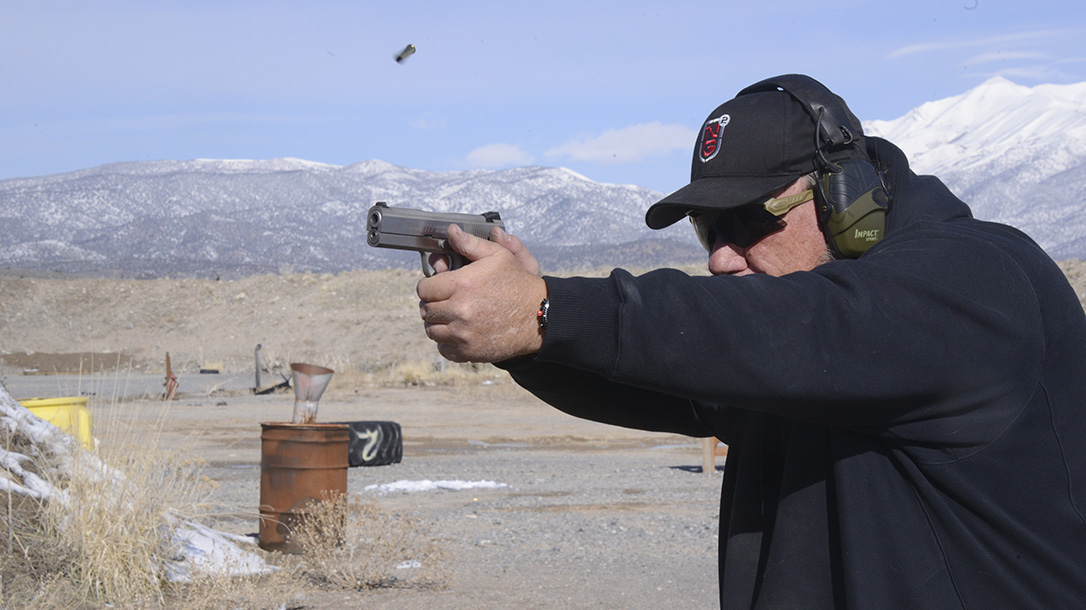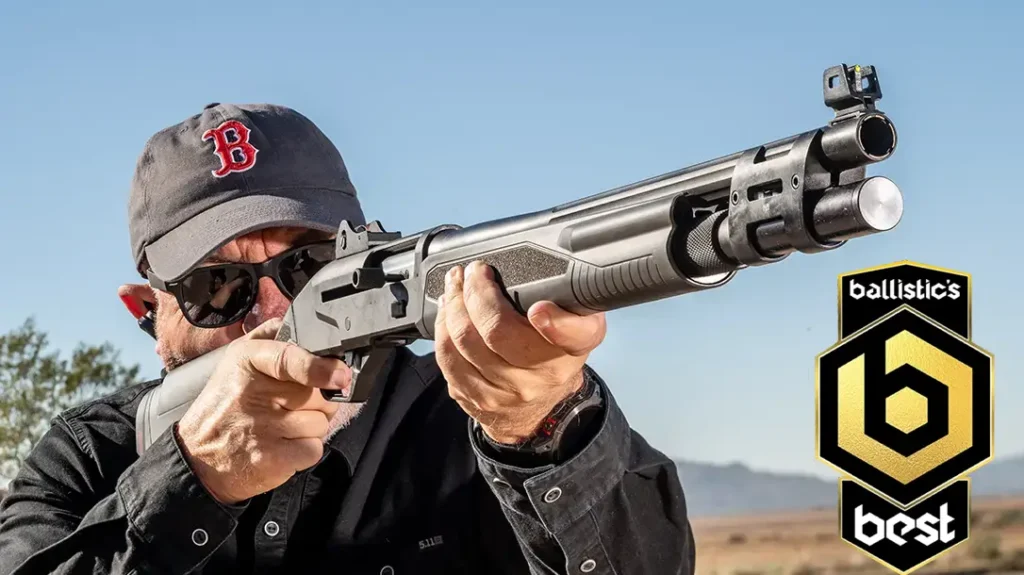The story of Coonan Inc. is one not uncommon in the firearms industry. It’s often a struggle to produce a gun that actually sells. It’s never quite as simple as how some people want to make it out to be. Designing a new firearm is one thing, but getting it into production, to market and staying profitable is yet another.
Having been involved at every level of that process at one time or another, I can tell you that it is simply difficult. Partnerships start out with the best of intentions only to suffer a falling out. Some companies just seem to fade away. But others endure, keep trying and eventually become successful firms, bringing innovation to the market. Coonan Inc. is an example of such a company.
Advertisement — Continue Reading Below
Coonan the Conquerer
Shooters new to the Coonan Classic are likely not aware that Dan Coonan actually started developing this pistol in the late 1970s. His Model A is essentially a product of arguments with his college roommates, and the pistol and its magazine ended up being part of Dan’s master’s thesis.
Dan was already a skilled machinist at the time. In fact, he served as an apprentice in manufacturing gyrocopter parts as young as 15. Like many innovators in the firearms industry, he grew up making things by hand on a mill and lathe. Out of that interest and skill base came the Model A, which possessed a linked barrel. Rather than reinvent the wheel, and without the CNC machining utilized today, the rest of the pistol used mostly 1911 parts.
Eventually the barrel used a welded lug before one was machined into it, making it “linkless.” The resulting pistols hit the market in 1981, with only a couple thousand made. Dan Coonan then sold his company to Bill Davis in the late 1980s and left it altogether in 1990. Coonan Arms filed for bankruptcy in 1994 and was eventually incorporated into JS Worldwide, but both were dissolved in 1998. For some, that would be the end of it, but fate and some hard work intervened.
Advertisement — Continue Reading Below
A Resurrection
In 2009, the pistol was resurrected. Parts from the original pistols surfaced at an auction, and Dan was able to acquire them. Then he acquired more parts and some barrels from former investors, providing the base for a few guns. Dave Neville, acquainted through their daughters’ attendance of the same college, convinced him to start a new business, Coonan Inc.
The eventual result was the Model C, a more refined version of the original. It retains the linkless barrel, adding dovetail sights and a smoother overall feel. The pivoting trigger remains along with an external extractor. Like everything these days, it benefits from the precision and tight tolerances of modern machining. But just as in his original thesis, it’s the magazine that is the most critical component. His design uses an articulated follower that maintains the proper cartridge angle as the top round is fed. The result is that Coonan pistols feed various bullet designs and weights consistently, even long .357 Magnum cartridges. Now the gun, the flagship of the company today, is called the Coonan Classic.
The Coonan design remains the only practical and usable .357 Magnum semi-auto on the market today. Roughly the size of a standard 1911, it is concealable, controllable, accurate and reliable. The Classic is available in a variety of finish options, including stainless and black DuraCoat, with various sights and grips. The company even offers long-slide variants and a version with a compensator. Coonan also offers a Compact model for easier concealment, and the company’s latest release is the MOT 45, a Classic chambered in .45 ACP.
Advertisement — Continue Reading Below
Coonan 357 Magnum Shootout
I recently got my hands on a stainless Classic and Compact for testing, with 5- and 4-inch barrels, respectively.
Coonan Classic Testing
First up was the Classic, and it turned out to be a real joy to shoot. It was controllable, accurate and anything but punishing. In fact, it was a ton of fun to shoot time and time again. With its 5-inch barrel, it makes for a very controllable and accurate .357 Magnum.
You can even swap out the springs and throw in some .38 Special ammo, making it just as soft-shooting as a 9mm 1911. It was so soft-shooting that I had to check to be sure the gun worked on the first couple rounds. So if you’re planning to take this pistol to a high-round-count class, then Hornady’s light- recoiling and very accurate 110-grain Critical Defense .38 Special +P ammo is the ticket. All of the .357 Magnum loads I tested, including those from Black Hills, Hornady, Remington and Sig Sauer, ran just fine.
Advertisement — Continue Reading Below
Coonan Compact Testing
Shooting the Compact was an even bigger surprise. After the first magazine, my thought was “What happened to the recoil?”
Sig Sauer’s 125-grain FMJs are factory rated at 1,450 fps, and they chronographed right at 1,401 out of the Compact while being an absolute joy to shoot. Every 125-grain load was the same—controllable, accurate and anything but punishing. The recoil was a bit more noticeable with the hotter 158-grain loads, but it wasn’t anything out of the ordinary. In essence this is a very controllable and accurate .357 Magnum with a 4-inch barrel.
Like the Classic, the Compact’s accuracy was excellent. Every five-shot group was at or around 2 inches, even with the heavier loads. This is plenty accurate for the real world. My best group with the Compact was just 1.5 inches at 25 yards using Sig Sauer’s 125-grain V-Crown JHPs. I fired these groups from the hood of my truck using a Wiebad bag as a rest, making it a bit more realistic.
Advertisement — Continue Reading Below
Moving back to 50 yards, the same Sig Sauer ammunition was just as flat shooting on a steel IPSC silhouette. My best five-shot group at 50 yards was about 4 inches or so. Aiming at a steel target at 100 yards, I was able to get five rounds out of seven in the center-mass. No, you probably won’t be making shots like this in the real world, but it’s not a bad thing to have in your pocket.
Coonan 357 Magnum Mates
Shooting these pistols was one of the pleasant surprises in this job. Most of my time these days is spent testing rifles, so it was nice to venture back into the handgun world. Having carried concealed since the mid-1980s, practicality has always been at the forefront of my process, and the Coonan .357 Magnums are easy to use and carry. If you’re accustomed to carrying full-sized 1911s, either of these gun will work for you.
My first duty revolver was a .357 Magnum, and my Smith & Wesson Model 627 is often close at hand, so it’s a caliber I believe in and have experience with. It is as proven as any self-defense pistol cartridge available today. These Coonan offerings just add to the choices for carrying this long-proven caliber in a pistol more suited for concealed carry. And the fit and finish are great—what you’d expect for 1911s in this price range.
Advertisement — Continue Reading Below
I had a hell of a time putting these guns down at the range. In fact, I depleted a large portion of my .357 Magnum supply. I used both of them on several occasions for everyday carry.
In the end, if you are looking for something a bit different in a venerable caliber for concealed carry, make sure you take a close look at the Coonan Compact or even the full-sized Classic. They are the product of ingenuity, innovation and the dogged persistence necessary to survive in this business, and that may be reason enough to get either one!
Coonan Classic Specs:
- Caliber: .357 Magnum
- Barrel: 5 inches
- OA Length: 8.7 inches
- Weight: 42 ounces (empty)
- Grips: Walnut
- Sights: Fixed three-dot
- Action: SA
- Finish: Stainless
- Capacity: 7+1
- MSRP: $1,560
Coonan Compact Specs:
- Caliber: .357 Magnum
- Barrel: 4 inches
- OA Length: 7.7 inches
- Weight: 39.3 ounces (empty)
- Grips: Walnut
- Sights: Fixed three-dot
- Action: SA
- Finish: Stainless
- Capacity: 6+1
- MSRP: $1,725
This story is from the spring 2018 issue of Ballistic Magazine. Grab your copy at OutdoorGroupStore.com. Get your digital only subscription on Amazon!
Advertisement — Continue Reading Below
